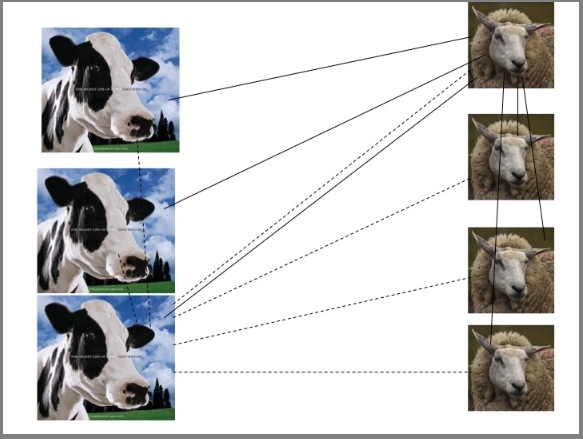Or search by topic
Number and algebra
Geometry and measure
Probability and statistics
Working mathematically
Advanced mathematics
For younger learners
Cows and Sheep



- Problem
- Getting Started
- Student Solutions
- Teachers' Resources
Before looking at some solutions that came in we would like to say that we were very pleased with the explanations that came in with many of the solutions - exactly what we would hope to encourage.
Francesca and Alex sent in the first correct solution and they come from Red Hill Field Primary School and so does Sam who sent in another correct solution a week later.
Francesca and Alex wrote:
We had many good replies from Bradon Forest School and here's Samuel's correct solution with some good explanations as to how he went about it.
Rees, who also came from Bradon Forest sent in a Powerpoint presentation and here's his slide for field 1

Well done!
We had 71 replies come in about this problem, They came from far afield - Qatar, Dublin, North Carolina, Australia, New York, Wisconsin and New Zealand as well as the U.K. The problem caused some deep thinking and just 16 replies had the correct answer.
You may also like
Exploring Wild & Wonderful Number Patterns
EWWNP means Exploring Wild and Wonderful Number Patterns Created by Yourself! Investigate what happens if we create number patterns using some simple rules.
Sending Cards
This challenge asks you to investigate the total number of cards that would be sent if four children send one to all three others. How many would be sent if there were five children? Six?
Dice and Spinner Numbers
If you had any number of ordinary dice, what are the possible ways of making their totals 6? What would the product of the dice be each time?

